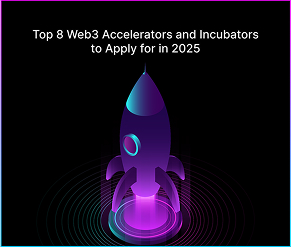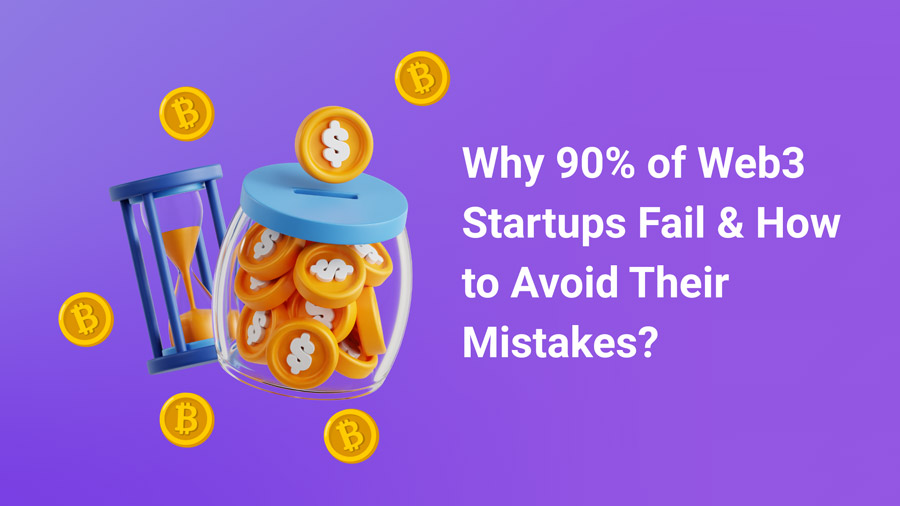Web2, the most familiar iteration of the internet, is integrated into all manners of our lives with social media and user-created content and media. Web3, which began as a movement to decentralize the Internet, has gained traction over the past few years. Pushing forward to 2022, web3 is shaping up to be a game-changing marketplace for all industries to conduct all forms of business operations.
Web3 is built based on the interpolarity of three technologies; Blockchain, Virtual Reality (VR), and Cryptocurrency (crypto). With a rising number of businesses competing to integrate their products in this new space comes a significant rise in Web3 development. Recent Google search trends indicate that interest in Web3 has spiked by thirty-three times in the last six months alone, suggesting businesses are showing an increased interest in migration toward the web3 space.
The role of digital transformation leaders in organizations
A digital transformation leader’s role is to prepare businesses to be future-ready by enforcing a digital plan to drive business growth with a view of technology as a tool to distinguish enterprises from their competitors. Digital company leaders are predominantly present in technology-first organizations alongside industries such as telecommunications, consumer industrial goods, banking, and healthcare. This article explores what factors industry digital transformation leaders must consider when migrating from web2 to web3.
Switch from Web2 to Web3
Before the arrival of web3, digital transformation (DX) primarily focused on web2 optimizations like employee upskilling, cloud computing implementation, AI-driven automation, and customer service optimization. Web3 has made an enormous industry impact with its innovative features, including decentralization, trustless and permissionless networks, Artificial Intelligence (AI), Machine Learning (ML), and omnipresence. This has created a compelling reason for digital transformation leaders to migrate their businesses further away from web2 toward web3.
Additionally, with the growing dominance of web3 as a new thriving marketplace for businesses, digital transformation leaders are racing against competitors to bring their businesses first into the web3 marketplace. This migration involves blockchain-based web3 solutions for business processes replacing existing operational practices. Digital transformation leaders can achieve this by taking an aggressive, all-out web3 migration or a step-by-step planned implementation strategy.
Either way, digital transformation leaders choose to drive their company’s future, it is worth considering these factors when considering web3 migration:
Customer-focused migration from Web2 to Web3
Prioritizing the improvement of customer experiences by web3 migration can result in a favorable return on investment (ROI) through enhanced customer experiences. Businesses can begin by simplifying specific customer-centric segments of the company that need improvement. For instance, businesses can explore offering cryptocurrency payment solutions through crypto wallets.
One of the biggest customer concerns today is data security; web3 migration to improve the safety of customer data through blockchain technology is a practical approach digital transformation leaders can employ to achieve better customer trust and brand loyalty. Digital transformation in web3 payments allows these digital identity wallets to grant them control over their data and personal information. In addition, cryptocurrency solutions add a clean and efficient payment B2C solution for customers who do not enjoy third-party handling charges.
Allowing customers absolute control over their money and identity in web3 is a good start for digital transformation leaders to achieve widespread acceptance of web3.
Start with transforming your business shortcomings while keeping working systems on the backburner
Digital transformation leaders should assess the shortcomings and strengths of their businesses. This analysis explains what’s working and what’s not from an operational standpoint. Subsequently, companies can prioritize competencies in dire need of web3 up-gradation and focus less on systems functioning well. Since this is an emerging platform, a stage-wise approach to migration could be beneficial and transformative for businesses without incurring operations issues. For instance, digital products and services staggering in sales can be showcased in the web3 metaverse marketplace. Consumers using augmented or virtual reality can digitally view and purchase products and services through payments made from their digital wallets with their preferred crypto tokens. Hence, improving businesses’ reach in the digital sector.
Another significant shortcoming faced by web2 companies is a lack of transactional trust and transparency when dealing with third-party suppliers, vendors, and other stakeholders. Digital transformation leaders can mitigate this issue by deploying the usage of one of the blockchain web3’s most significant robust features, smart contracts.
A smart contract is a form of agreement between two transacting parties where the rules of an asset exchange are written in immutable computer code that executes when a set of preset conditions are met. By doing so, businesses can exchange their digital or physical assets securely without a mediator and save valuable time and money, ensuring better relationships and transparency with operational transactions.
Hence as a digital transformation leader, it would benefit your business to take a priority-based approach to migration, focusing initially on business problems and gradually moving on to the improvement of adequately functioning competencies.
Acquire acceptance from organizational stakeholders to impose the change to web3 services
Overnight migration to web3 is not a practical solution for many businesses. Digital transformation leaders should consider that an aggressive migration strategy could be complicated for most employees who have yet to understand the workings and benefits of web3 adoption. Instead, easing business stakeholders into web3 by providing relevant web3 educational information and training could lead to a smoother transition. Other in-depth employee training programs on the design and usage of web3 DApps could induce smoother stakeholder acceptance.
Taking advantage of the web3 augmented digital marketplace
Revisiting the most crucial space for businesses within web3 is its robust digital marketplace. Digital transformation leaders must consider the business potential in entering products and services into this space. Combined with effective cryptocurrency payment solutions, this could be precisely the migration a business needs to push it over the top against competitors.
Alongside the integrated virtual reality component in web3 marketplaces, DX can offer a revolutionary experience for customers. Global supply chain Walmart has announced its move toward web3 for its retail products alongside the planned creation of its cryptocurrency is a compelling use case of how digital transformation leaders are taking advantage of the digital marketplace.
So as a digital transformation leader, consider all the benefits and migration strategies and think about how big an entry you would like to make for your business in the strengthening web 3.0. And if you need professional assistance with your migration, don’t worry. All you have to do is find the right web3 studio partner who can professionally guide you in making your transition toward future-proofing your enterprise.






